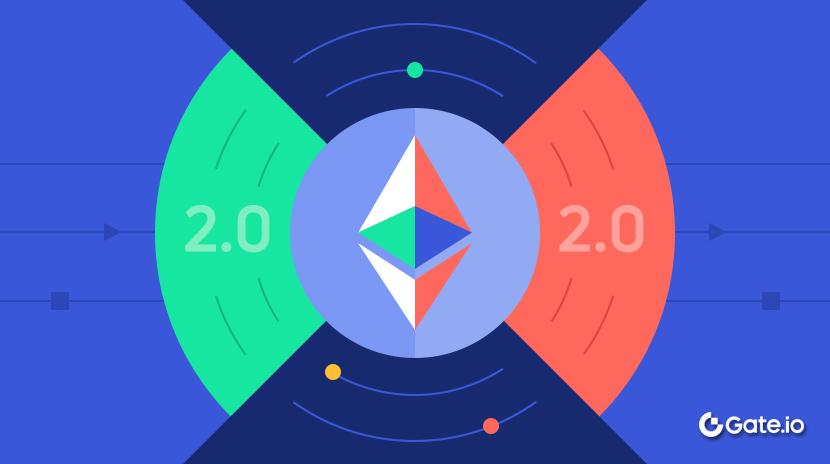beacon chain

The Beacon Chain is a foundational component of Ethereum 2.0 (now referred to as Ethereum's consensus layer), which officially launched on December 1, 2020, marking a significant step in Ethereum's transition to a Proof of Stake (PoS) mechanism. The Beacon Chain is responsible for coordinating validators across the network, maintaining the consensus mechanism, and will eventually connect the Ethereum mainnet with shard chains. As a core technological innovation in the modernization of the Ethereum ecosystem, the Beacon Chain fundamentally transforms Ethereum's security model and energy consumption, protecting the network through validators staking ETH rather than consuming vast computational resources.
Background: What is the origin of beacon chain?
The Beacon Chain concept first appeared in Ethereum's development roadmap as a key solution to address Ethereum's trilemma of scalability, security, and decentralization. After years of research by Vitalik Buterin and the Ethereum research team, the Beacon Chain was designed as the first phase of Ethereum 2.0 upgrades, also known as "Phase 0".
Development timeline of the Beacon Chain:
- 2016-2018: Ethereum researchers began exploring PoS consensus mechanisms, proposing the Casper protocol
- 2018: First release of the Beacon Chain specifications
- November 2020: Deployment of the deposit contract, allowing users to stake a minimum of 32 ETH to become validators
- December 1, 2020: Genesis block of the Beacon Chain generated, officially launching the chain
- September 15, 2022: The Ethereum Merge completed, successfully combining the Beacon Chain with the original Ethereum mainnet
The emergence of the Beacon Chain addressed the high energy consumption issues of PoW mechanisms while providing the foundation for greater security and scalability for the Ethereum network.
Work Mechanism: How does beacon chain work?
The Beacon Chain employs a Proof of Stake (PoS) consensus mechanism with the following core operational elements:
Validator system:
- Users become validators by staking 32 ETH
- Validators are randomly selected to propose blocks and attest to their validity
- Rewards or penalties (slashing) are applied based on validator behavior
Block production and confirmation process:
- The Beacon Chain organizes block production units called "slots" at fixed intervals (12 seconds)
- Every 32 slots form an "epoch" lasting approximately 6.4 minutes
- In each slot, a validator is selected as the block proposer
- Other validators are responsible for attesting to and voting on blocks
- When sufficient consensus is reached among validators, blocks are confirmed and added to the chain
The Beacon Chain uses the LMD-GHOST (Latest Message Driven Greedy Heaviest Observed SubTree) fork choice rule and Casper FFG (Friendly Finality Gadget) finality mechanism to ensure network security and block finality. Through random selection of committees and validators, the system can resist various types of attacks while maintaining decentralization.
What are the risks and challenges of beacon chain?
Despite bringing significant advantages to Ethereum, the Beacon Chain still faces several important risks and challenges:
Technical risks:
- High code complexity, potentially harboring undiscovered vulnerabilities
- Novel attack vectors such as long-range attacks and validator collusion
- Insufficient client diversity posing risks of network disruption
Economic risks:
- Validator centralization concerns with large staking pools controlling too much network power
- Long-term sustainability challenges of the staking reward mechanism
- Systemic risks introduced by liquid staking derivatives (such as stETH)
Operational challenges:
- Validators must maintain high availability to avoid penalties
- Relatively high technical barriers limiting participation by average users
- Time restrictions on exit queues potentially causing liquidity issues
Despite these challenges, the Ethereum community and development teams are actively working to address these issues through continuous optimization and upgrades to ensure the security, reliability, and decentralization of the Beacon Chain.
The Beacon Chain represents a significant advancement in blockchain technology, achieving the transition from an energy-intensive consensus mechanism to a more sustainable and secure Proof of Stake model. As the foundation of Ethereum's new consensus layer, it has not only dramatically reduced the network's energy consumption (by approximately 99.95%) but also paved the way for future sharding technology, enabling the Ethereum network to potentially achieve higher throughput and lower transaction fees. As development continues, the Beacon Chain will play a crucial role in driving Ethereum and the entire blockchain industry toward a more scalable, secure, and sustainable future.
Share
Related Articles

What Is Ethereum 2.0? Understanding The Merge

Reflections on Ethereum Governance Following the 3074 Saga
